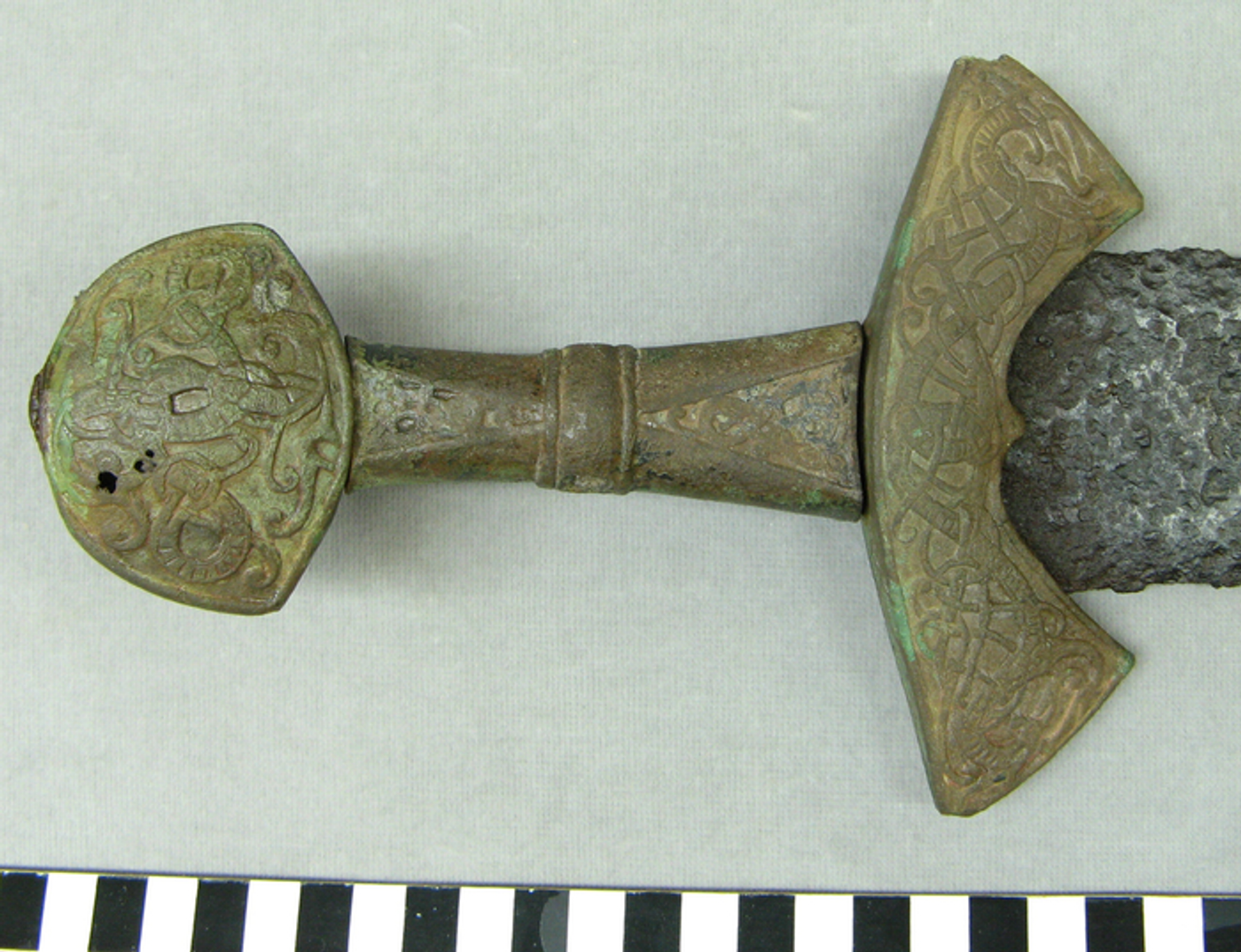Was This Medieval Warrior Non-Binary?
When scientists unearthed a grave at Suontaka Vesitorninmäki, Hattula, Finland in 1968 that contained two swords, jewelry, and bedding, the find suggested that some medieval women held a lot of power. Other researchers pushed back on that idea and hypothesized that the grave actually included two burials, one of which must have been a man, because women were not buried with weapons like swords. Reporting in the European Journal of Archaeology, researchers have now determined that the person buried at the Suontaka grave may have been non-binary because of the artifacts they were buried with, and that they carried the sex-chromosome aneuploidy XXY.
Across countries and cultures, women have assumed a variety of roles. As researchers have unearthed historical sites, there's been debate about the positions of women in various societies. Several decades ago, researchers began to discuss whether archeological evidence had been misinterpreted because it was viewed through the lens of nineteenth-century stereotypes. When artifacts were recovered from sites, scientists would often base conclusions about gender on the type of artifact found in a given grave. For example, the presence of weapons would lead an investigator to conclude that a gravesite probably contained a male, and that female remains were unrelated to the find.
In western society, there's historically been a division of labor that often falls along the lines of sex or gender. In past archaeological research, it's often been assumed that in medieval graves, swords indicate masculinity, though they might be family heirlooms or a sign of power. Axes or arrowheads have been found with people that had female bodies, sometimes with jewelry. It's still unusual to find weapons at female burial sites, so when jewelry and weapons are found together, it's been theorized to be a sign of a mixed gender burial.
Genetic technologies have enabled scientists to correct some old assumptions. For example, a 2020 study showed that a Viking skeleton that was long thought to be male was actually female, and was not Scandinavian. Advanced genetic tools have also shown that sex has long been a spectrum, and scientists have said that people should not be classified on the basis of their anatomy or genetics.
Humans can have range of possible sets of sex chromosomes; the majority of us carry either XX or XY, but there are individuals with other combinations including XXX, XYY, XXY, or XXXY. Klinefelter syndrome is the most common: XXY. Aneuploidy is when a person carries an atypical number of sex chromosomes. In some cases, these individuals have physiological dysfunctions but in other cases the aneuploidy goes undetected because there are no obvious symptoms.
This particular study suggests that if this individual had Klinefelter syndrome characteristics, their Early Medieval community may not have considered them strictly male or female. While their clothing was typical of females, they may have lived outside of traditional gender norms.
Graduate student Ulla Moilanen of the University of Turku noted that the abundance of objects buried with this person indicates that they were not only accepted by their community but respected, and that biology was not the sole determinant of a person's identity.
Sources: University of Turku, European Journal of Archaeology










